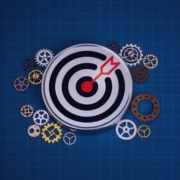Rewriting your career story: How to use this year as a fresh chapter
Life is a series of chapters, and your career is no different. Just like a novel, your professional journey unfolds with highs, lows, and plot twists. But what if 2025 could be the year you take control of your career story, reshaping it into a narrative of growth, purpose, and success? Whether you’re a seasoned professional or just starting, partnering with a recruitment agency can be the key to unlocking new opportunities and navigating your next career move with confidence. We believe that every professional has the potential to start rewriting their career story. This blog post will guide you through the process of turning 2025 into your fresh chapter.
Why your career is a story worth telling
Your career is more than just a list of jobs or a collection of responsibilities. It’s a story about where you’ve been, what you’ve learned, and where you’re headed. By viewing your career as a narrative, you gain the power to:
– Reflect on your journey: What experiences have shaped you?
– Highlight your strengths: How can you showcase your unique skills and talents?
– Set a clear direction: Where do you want your story to go next?
This mindset shift can empower you to take ownership of your professional path, embracing change and growth as part of the process.
Turning the page: Recognizing when it’s time for a new chapter
Sometimes, the hardest part of rewriting your career story is knowing when to start. Here are a few signs that it’s time for a new chapter:
1. You feel stuck
Do you ever find yourself counting down the hours at work or feeling like you’re just going through the motions? This sense of stagnation is a common signal that it’s time to move on. When your role no longer challenges or excites you, it often means your potential is being underutilized.
What to look for
Lack of opportunities for growth, repetitive tasks that don’t engage you, or feeling unmotivated even when you try to shake things up.
Why it matters
A career that fails to challenge you can leave you feeling uninspired, robbing you of the chance to thrive and reach your full potential.
2. Your goals have evolved
As we grow personally and professionally, our priorities and aspirations naturally shift. Maybe your career goals from five years ago no longer align with your current values or life circumstances.
What to look for
You’ve developed new interests, your passions have changed, or your current job doesn’t align with the work-life balance or purpose you seek.
Why it matters
Staying in a role that no longer fits your aspirations can make you feel unfulfilled. Acknowledging this shift allows you to take ownership of your career path and redirect it toward what truly matters to you.
3. Burnout is creeping in
Burnout is a serious issue that can impact not just your performance but also your mental and physical health. Feeling constantly exhausted, unmotivated, or emotionally drained by your work are all red flags that something needs to change.
What to look for
You dread going to work, feel constantly overwhelmed, or notice that even small tasks seem monumental. Burnout often comes with a sense of detachment from your work and a lack of enthusiasm for your achievements.
Why it matters
Ignoring burnout can lead to long-term negative consequences for your well-being. Taking steps to address it—whether through a career change or adjusting your current responsibilities—is essential to preserving your health and happiness.
4. You’re drawn to something new
Sometimes, the call to turn the page isn’t about dissatisfaction with your current job—it’s about excitement for a new opportunity. Whether it’s a different industry, a specific role, or a skill you’re eager to master, following your curiosity can be a powerful motivator.
What to look for
You’ve been researching a new field, find yourself daydreaming about a different career, or feel a spark of excitement when learning about certain roles or industries.
Why it matters
Exploring new interests allows you to grow and discover paths you might not have previously considered. Trusting your instincts and pursuing these opportunities can lead to unexpected and rewarding career developments.
Acknowledging these signs is the first step toward building a fresh narrative that reflects who you are today.
How to rewrite your career story in 2025
1. Reflect on your past chapters
Every great story has a foundation, and your career is no different. Take time to review your professional journey so far. Consider:
– What achievements are you proud of?
– What challenges have you overcome?
– What lessons have you learned along the way?
This exercise not only helps you appreciate your progress but also provides clarity on what to carry forward into the next chapter.
2. Envision your career’s plotline
Great stories have direction. Imagine where you want your career to go and create a “plotline” for the year ahead. Ask yourself:
– What’s my ultimate goal for 2025?
– What skills or experiences do I need to get there?
– What kind of work environment and culture align with my values?
This vision becomes your guiding light, helping you make decisions that align with your desired future.
3. Embrace the power of storytelling
Storytelling isn’t just for authors—it’s a powerful tool in your career arsenal. Use storytelling principles to craft a compelling professional narrative:
– Define your theme: What’s the overarching message of your career? Is it about innovation, resilience, or leadership?
– Showcase your “Character Development”: Highlight how you’ve grown in your roles and skills.
– Include key “Plot Points”: Share specific accomplishments and turning points that illustrate your journey.
This approach can transform your resume, LinkedIn profile, and interviews into memorable and impactful storytelling opportunities.
4. Update your resume and online presence
Your resume and LinkedIn profile are the “book covers” of your career story. Make sure they reflect your most recent achievements and align with your goals for 2025.
– Highlight skills that are in demand in your target industry.
– Use action verbs to describe your accomplishments.
– Customize your profile to tell a cohesive story about your expertise and aspirations.
5. Invest in continuous learning
Every protagonist faces challenges, but they also grow through learning. To stay competitive in today’s job market, commit to expanding your skillset. Consider:
– Enrolling in online courses or certifications.
– Attending industry-specific workshops or seminars.
– Joining professional organizations or networking groups.
Learning not only enhances your skills but also shows potential employers that you’re proactive and adaptable.
6. Network with intention
No story exists in isolation, and your career story is no different. Networking allows you to connect with others who can support your journey.
– Attend industry events to meet like-minded professionals.
– Reach out to mentors or colleagues for advice and guidance.
– Leverage LinkedIn to build meaningful connections and stay visible in your field.
The right relationships can open doors to opportunities you may not have considered.
Writing your new chapter with MASA
Rewriting your career story is a journey, not a one-time event. As you craft your next chapter, remember that MASA is here to support you every step of the way. Whether you’re looking for a fresh start in a new industry or aiming to climb the ladder in your current field, we have the resources and expertise to guide you.
2025 is your blank page to start rewriting your career story, waiting to be filled with new opportunities and accomplishments. Let MASA help you turn the page and create a career story you’re proud of. Explore our services and find your next opportunity today by visiting MASA’s homepage








